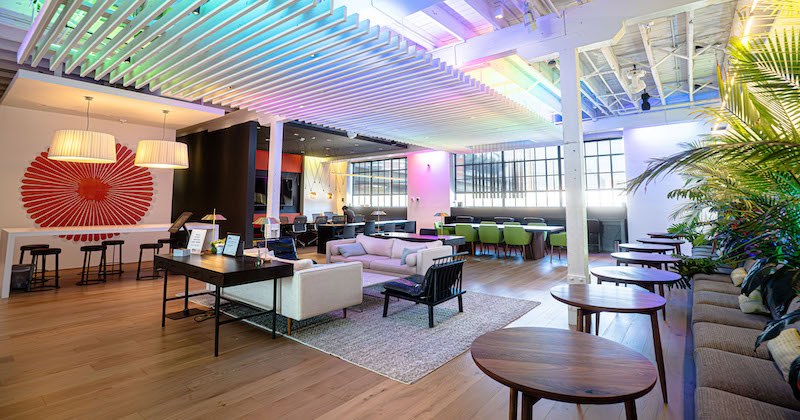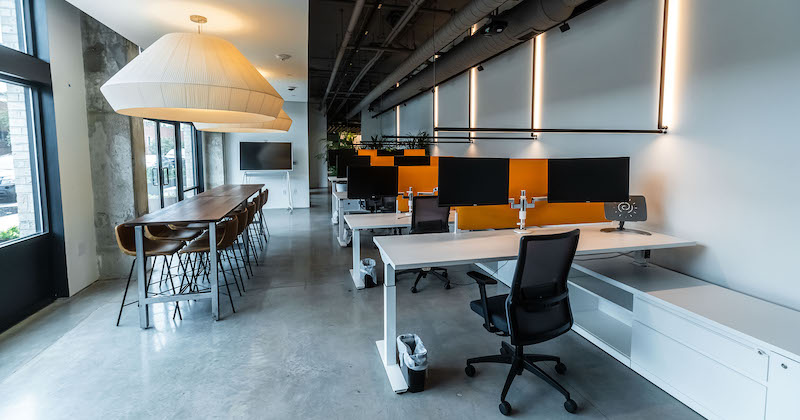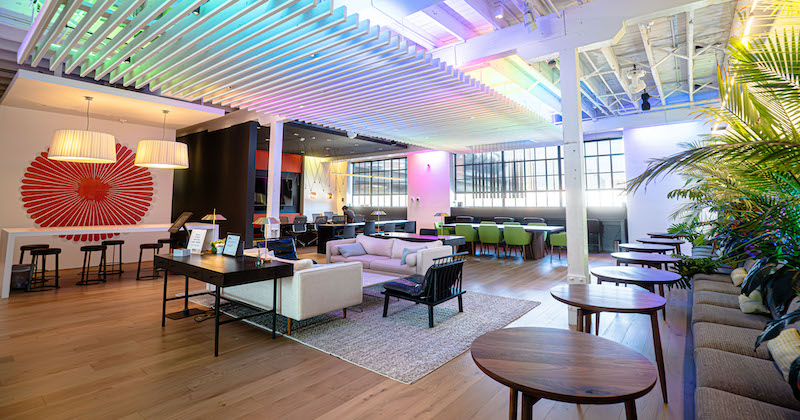

By Erin McDannald
TThe concept of “organic faring” has become popular with celebrities and athletes to optimize their health and physical performance through changes and treatments for lifestyle. These interventions aim to optimize physiological markers that contribute to general well -being and durability. Since science that is bypassing biohacking is further advanced, real-time environmental monitoring systems offer the potential to extend these advantages into the workplace, which emphasizes mental relaxation and convenience more.
From building management to human optimization
Traditional building management systems pursue data such as those that enter the office and when, which lights you flip, which workstations are reserved, etc. This data is often used by facility managers to develop a number of predictions for the preliminary program in building systems. For example, when the workers arrive around 8 a.m., the HLK must start with heating or cooling up to ambient temperatures an hour or two. AI-powered environmental monitoring systems collect these arrival data and react to you in real time, whereby the aircraft requirements are adapted based on the actual activity.
Honeywell reported that 84% of the decision-makers for commercial buildings would like to increase the use of AI next year, largely because it helps to automate these processes in which employees have to quickly understand, interpret and react to data. With this technology, decision -makers in conjunction with the AI structure software can improve the work areas to relieve environmental factors that are known that they contribute to reduced productivity, an increased level of stress, poor air quality and dissatisfaction of the jobs.


With a static system, activities such as brainstorming sessions can be stuffy in the conference room if the CO2 levels rise during further conversation. Studies show that the cognitive function, when CO2 levels exceed 600 ppm, is often stationary after 90 minutes. By monitoring and adapting air quality, temperature, composition, noise levels and autonomous lighting, facility managers can improve health and productivity at the same time. Especially if employers have difficulty encouraging employees to return to the office, are there better benefits for commuting than their health?
With a view to the future, facility managers focus more on the individual and how their real estate strategy can be most effective for the end user, which the person emphasizes about the type of work, regardless of whether it is or work together. If you make sure that the employees hold their best, companies receive optimal performance from them. AI can play an important role in adapting to the different cases such as retail environments compared to work environments by focusing on the health and well -being of the individuals.
This real-time feedback loop is not just about doing certain tasks better. The natural circadian rhythm of the body typically experiences a low energy point in the early afternoon. By reducing the CO2 in the circulation and increasing the flow of fresh air during this time, the employees do not feel the same sleepiness. Air pollution and light flickers among the main states for fatigue and stress. We often believe that we receive the greatest productivity of employees when the lights are bright. However, analytical thinking stands in the way. Lighting that brings in a warmer color temperature or is completely dims enables more critical thinking.
If you are healthy and feel physically good, you are more prepared to fully get involved and do your best, regardless of the Task type.
The measurable effects on health and productivity
Smart Building Systems have rediscovered systems over their facilities, which leads to greater operational efficiency and lower costs. AI has developed these systems to capture and analyze environmental metrics at a greater depth, which leads to even larger returns.
Within the increased office, an autonomous company for software development companies, this technology has contributed to this:
- Reduce the energy costs even further within 8 to 12 months.
- Reduce annual health insurance costs by $ 300,000 within 18 months.
- Reduce the number of illness days per person and month from 2.5 in 2023 to 1.38 in 2024.


Due to the hybrid work model from Elevated, the employees were consistently in the office only 2-3 days a week, and the company still has a large ROI for the investment.
The evidence is also in biometry. By comparing personal wearables data of weekdays with the weekends observed, increased increases in heart rate variability (HRV) in their own office by adapting science to space. The higher your HRV, the more resistant it is that you have stress, and the better you can use the precisely cortex of the brain to make decisions. Higher HRV is also associated with rounded inflammation. The data simply showed the real-time monitoring system at work in the office and showed HRV improvements of up to 10 points.
If the AI building software develops further, facility managers are no longer just administrators of the physical space – they are enabled healthier, more intelligent jobs. Through the integration of biometric knowledge, ambient data and intelligent automation, Facility Management rooms Biohack that not only save energy, but also actively support cognitive performance and well -being. The future of building management lies in personalization and adaptability, where the needs of the individual lead the behavior of the building itself. For companies and companies, this means fewer disease days, higher productivity and measurable ROI. For employees, this means to get to a job that literally works with you and for you.


Erin McDannald is a visionary entrepreneur, author and innovator who works at the interface of biology, technology and design. Their work examines how the built environment can develop into a symbiotic system that promotes both human health and the planet. By mixing the latest science with principles inspired by the natural world, Erin redefines how we live and work in harmony with our surroundings.
As a CEO of Elevated, Erin has developed an intelligent construction platform that transforms buildings into adaptive systems and integrated lighting, IoT and analyzes to create environments that are as reaction and sustainable. Your work calls for conventional ideas of design and functionality and is committed to rooms that not only meet human needs, but also work together with the ecological rhythms of the earth.
Erin's upcoming book examines the biological roots of behavior and emotions and shows how inflammatory markers influence the way we appear in work and life. Erin's insights based on personal experience as a mother, which navigates on complex medical challenges, show how our environments – both internally and externally – can either ignite or enable either. It is committed to a future in which design serves as a bridge between human resilience and planetary sustainability and offers a blueprint for life in harmony with the systems obtained to us.
